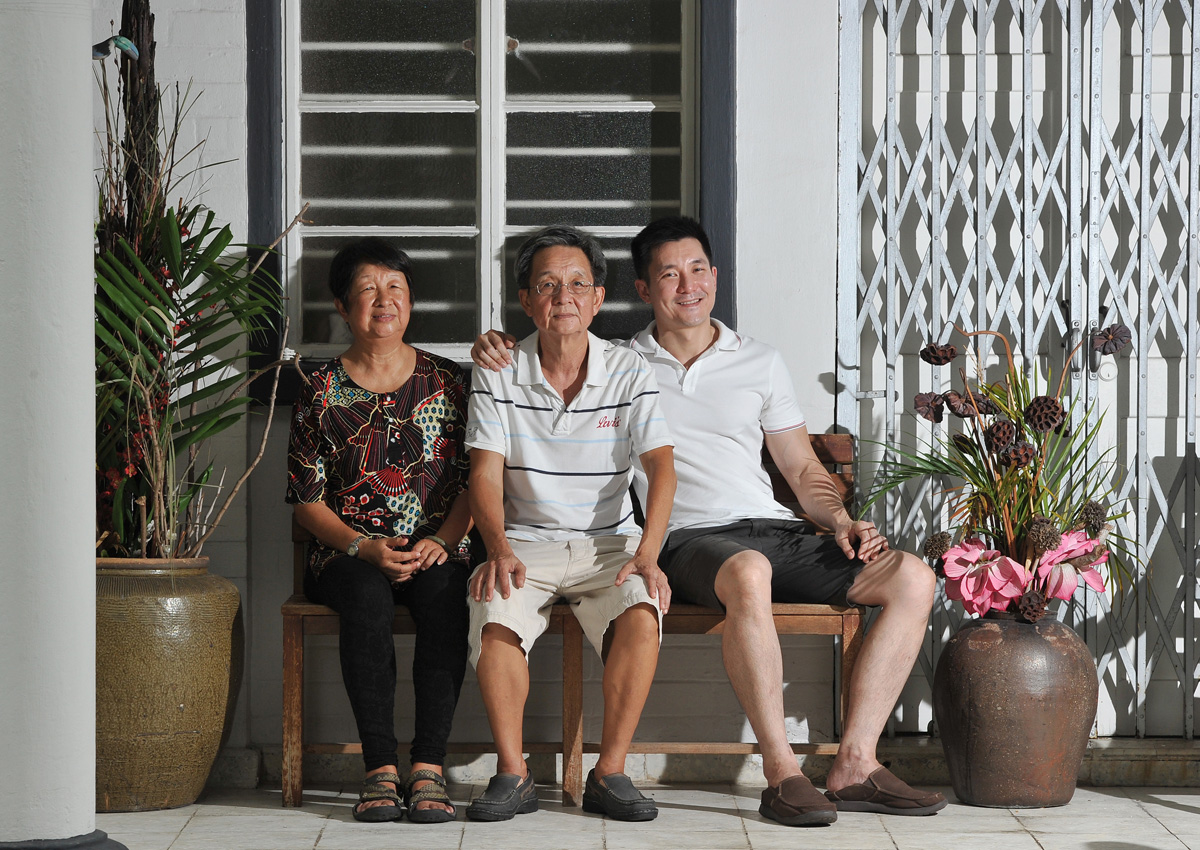As children, the Ong siblings used to get free rides on public buses sometimes.
Their father, Ong Cheng Siang, was the second-generation owner of the Green Bus Company which operated five routes from its terminal in Queen Street to as far as Lim Chu Kang and Johor Baru.
The iconic 30-seater vehicles – Vulcan omnibuses from England – were painted a deep shade of green.
“As teenagers we took the bus out with friends. The bus conductors recognised us and we got on free,” said 65-year-old Ong Lek Meng, an oil trader.
The most profitable route was bus No. 5 which covered the Bukit Timah area and ended at the Princess Elizabeth estate.
The company was established in the mid-1930s by Mr Ong’s grandfather Ong Chin Chuan and several other partners.
The Ong family has loaned about 50 photos capturing highlights of the company’s history to the National Heritage Board (NHB).
These will be incorporated into a refreshed version of the board’s Bukit Timah heritage trail which will be launched in September.
Mr Alvin Tan, NHB’s assistant chief executive of policy and community, said the Ong family’s photos and personal stories “fill a crucial gap in Singapore’s early transport history”.
Mr Tan hopes the families of other early bus companies will also share their stories and photographs “so we can have a fuller understanding of Singapore’s early bus networks and operations”.
Prior to the war, the Green Bus Company was one of 10 which ran “mosquito buses” or small seven- seater motor buses that plied rural areas. These were popular with the working class because they were cheap and fast.
These businesses, which included Keppel Bus Company, Soon Lee Bus Company and Ngo Hock Bus Company, were mainly owned and operated by the Hock Ching dialect group from Fujian province.
As children, some of the Ong siblings would spend evenings at the bus terminal counting the takings from the various services.
Ms Ong Bee Geok, 66, a retired bank worker, said: “Rides started at five cents. The most expensive ticket was priced at 50 cents, to Johor Baru.”
While business boomed for the most part, internal strife was common among staff and shareholders.
On April 27, 1960, Mr Ong Cheng Siang, then 44, was kidnapped after a dinner and held captive in an underground cell in the east coast.
Mr Ong Lek Meng said of his father’s ordeal: “We heard that he was buried in a hole in the ground. Our house was filled with relatives, reporters and the police. He came back with rashes.”
According to newspaper reports, Mr Ong was released nine days after a substantial ransom, believed to be $500,000, was paid. His kidnappers threw him out of a car along Amber Road. There, he had hailed a cab to his motor workshop in Rochor Canal Road.
Later, in the 1960s, he was also the victim of an acid attack which left his neck, chest and arms scarred.
He eventually developed throat cancer and died in 1971.
The company was amalgamated in 1971 with two others to form the United Bus Company.
By 1973, the Government had further merged all the public bus companies into Singapore Bus Services – today’s SBS Transit.
Mr Ong Lek Meng’s son Patrick Ong, 39, who loaned the photos to the NHB, said he wanted to share his family legacy with the public.
“I hope future generations can learn about the contributions of Singapore’s early families,” the civil servant said.
“The photos could also help researchers digging into Singapore’s past.”
melodyz@sph.com.sg

This article was first published on May 13, 2016.
Get a copy of The Straits Times or go to straitstimes.com for more stories.






